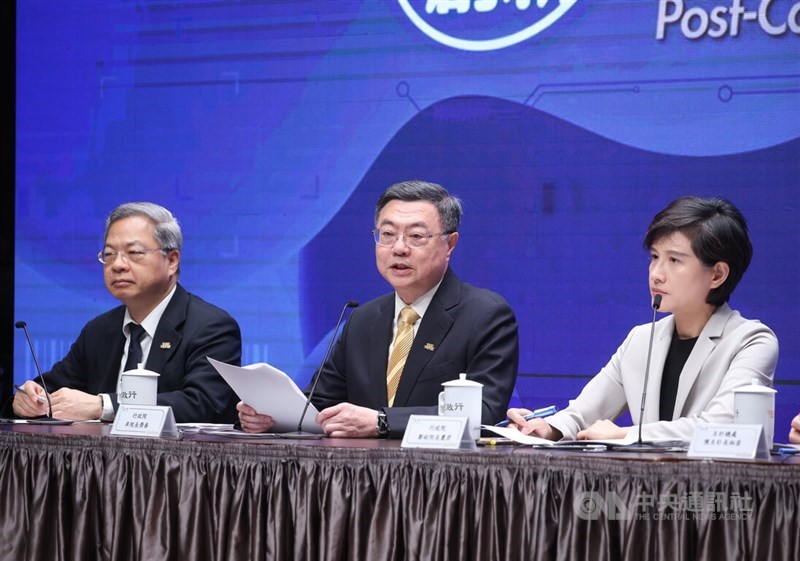
Taipei, Aug. 21 (CNA) Taiwan's Executive Yuan on Thursday put forth a NT$3.13 trillion (US$102.9 billion) proposal for government expenditure in 2026, which includes a significant increase in military spending.
The proposal, comprising NT$3.03 trillion for the central government's general budget and NT$100.8 billion in special allocations, was submitted by the Cabinet's Directorate General of Budget, Accounting and Statistics (DGBAS) and will be sent to the Legislature for approval at the end of the month.
The proposed expenditure for fiscal year 2026 boosts funding for the Ministry of National Defense (MND) by NT$93.8 billion -- a year-on-year increase of 20.1 percent -- to cover payments for defense articles and the procurement of additional ammunition and spare parts.
● Special defense budgets anticipate more U.S. arms sales: Experts
Factoring in veterans' and Coast Guard expenses, Taiwan's military spending will reach NT$949.5 billion next year, representing 3.32 percent of gross domestic product (GDP), according to DGBAS data.
In a social media post later Thursday, President Lai Ching-te (賴清德) said the proposed military budget increase was aimed at strengthening Taiwan's security and signaling to the world the country's commitment to enhancing its defense capabilities.
Other than military spending, public infrastructure expenditure -- including flood control projects, provincial expressway improvements and the construction of AI computing data centers -- is set to rise by NT$93 billion, or 16.1 percent from last year to NT$670.4 billion, according to the DGBAS.
The government will allocate NT$203.1 billion for technology development -- up 15.1 percent from 2025 -- to fund basic science research as well as R&D in drones, robotics and low Earth orbit (LEO) satellites.
An additional NT$299.3 billion has been earmarked for public development projects, including placing a railway line underground in Taoyuan, seawater desalination plants in Tainan and Hsinchu County and the Southern Taiwan Science Park. In addition, the government also plans to pump NT$120 billion into the Labor Insurance Fund and NT$20 billion into the National Health Insurance (NHI) system, DGBAS official Hsu Yung-i (許永議) said at a Cabinet briefing in Taipei.
Meanwhile, the Cabinet rejected a funding proposal to increase salaries for military personnel, civil servants and public school teachers next year, citing economic headwinds caused by the U.S. tariffs and the NT$10,000 cash handouts to Taiwanese citizens passed by the Legislature.
At the briefing, Premier Cho Jung-tai (卓榮泰) cited DGBAS data showing that tax revenue for 2026 is projected to be NT$2.86 trillion, down NT$302.5 billion compared with 2025.
Cho said the proposed NT$3.03 trillion general budget, the NT$100.8 billion in special funding and an estimated NT$126.5 billion for debt repayments will create a shortfall of NT$400 billion in 2026, which the government plans to cover through borrowing.
According to the premier, the reduction in revenue results from law revisions passed by the opposition-controlled Legislature late last year, which require the central government to give a greater share of its tax revenues to local authorities.
The DGBAS data showed that more than 90 percent of value-added tax and nearly 30 percent of commodity tax, which were previously retained by the central government, will now go to local governments.
- Business
Former digital minister warns TSMC faces rising cybersecurity risks
12/10/2025 10:49 PM - Society
Baby born on a Taiwan roadside with help from teachers, paramedics
12/10/2025 09:41 PM - Politics
Fines for Taiwan shipbuilder mount over delayed submarine delivery
12/10/2025 09:06 PM - Society
756 fraud cases found on Xiaohongshu in 2025: CIB
12/10/2025 08:37 PM - Cross-Strait
Taiwan monitoring amid potential large-scale PLA exercise: Official
12/10/2025 08:02 PM